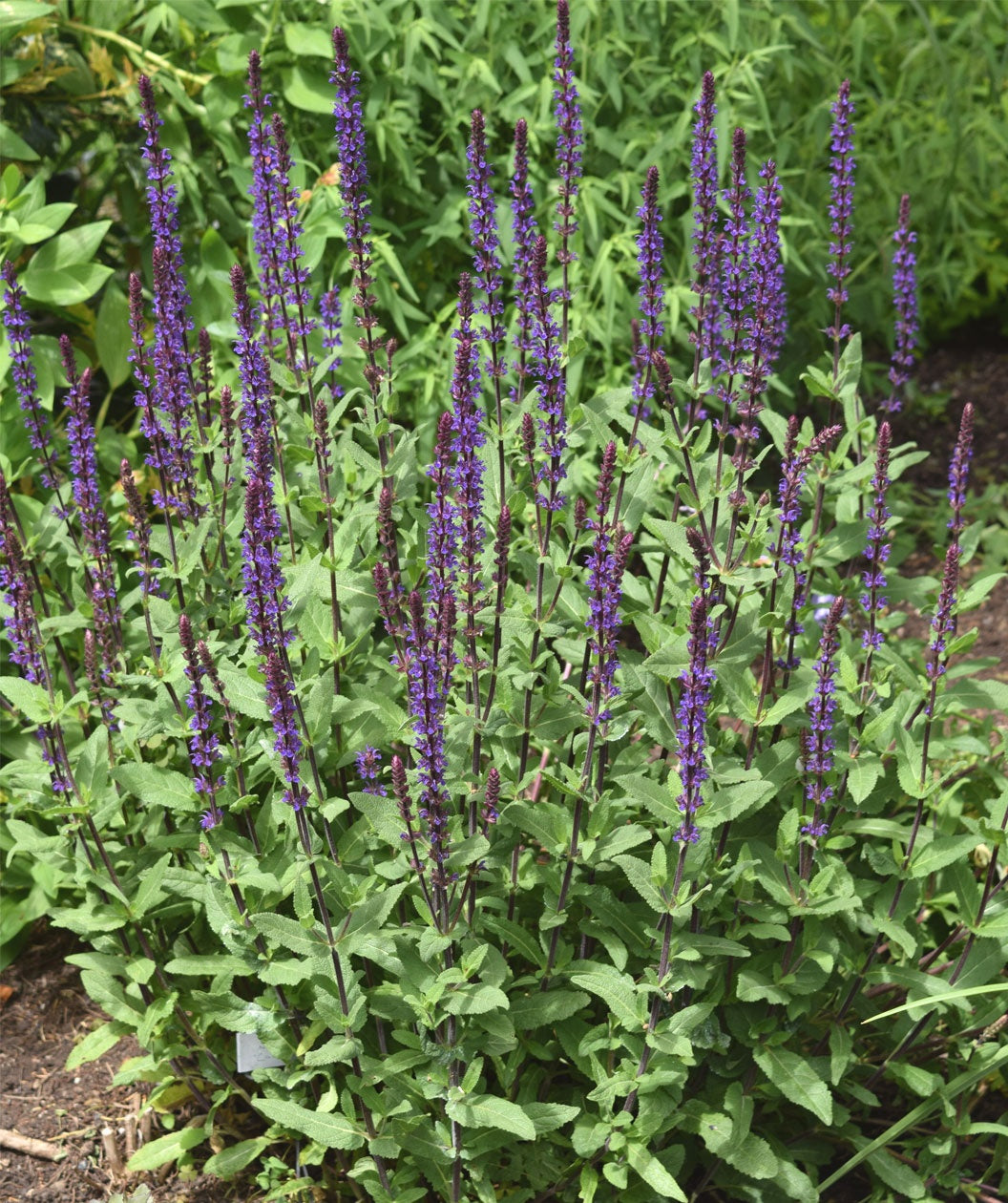


ENTICING PURPLE BLOOMS FOR A HUMMINGBIRD'S OASIS
FEATURES:
- Late spring, striking violet purple flowers bloom on tall stems filled with clusters of tiny blossoms
- Aromatic foliage adds an attractive green accent throughout the season
- Elegant and sophisticated in garden beds and patio containers
- Caradonna will be a star in your perennial border with its upright habit and its summer flowers
- The butterflies, hummingbirds and bees will all approve when you plant Salvia in your garden
- Hand Selected, Fresh from the Grower
- Ships in a plant-safe designed box
Growth Facts
- Hardiness Zone: 4-8
- Mature Height: 1-2' tall
- Mature Width: 1-2' wide
- Exposure: Full Sun
- Spacing: 1-2' apart
ENTICING PURPLE BLOOMS FOR A HUMMINGBIRD'S OASIS
FEATURES:
- Late spring, striking violet purple flowers bloom on tall stems filled with clusters of tiny blossoms
- Aromatic foliage adds an attractive green accent throughout the season
- Elegant and sophisticated in garden beds and patio containers
- Caradonna will be a star in your perennial border with its upright habit and its summer flowers
- The butterflies, hummingbirds and bees will all approve when you plant Salvia in your garden
- Hand Selected, Fresh from the Grower
- Ships in a plant-safe designed box
Growth Facts
- Hardiness Zone: 4-8
- Mature Height: 1-2' tall
- Mature Width: 1-2' wide
- Exposure: Full Sun
- Spacing: 1-2' apart
Why plant Caradonna Meadow Sage?
Exquisite! Caradonna Salvia carries itself with style and grace. Bringing an important vertical element to the landscape, it offers svelte upright flower spikes lined with deep indigo-blue blossoms. Purple-black stems add definition to the plant in and out of bloom. But when is it not in bloom? Caradonna flowers for an incredibly long time—it begins in late spring and often continues the entire growing season! This splendid Spirit looks sharp in formal planting schemes, but it is equally at home in more naturalistic gardens and meadows. Adaptable, elegant, and ever-blooming. We love it.
This species of Salvia, or Meadow Sage, is a wildflower that ranges from eastern Europe to western Siberia; it favors cool-summer climates. Meadow Sage grows most abundantly in sunny, dry meadows and forest edges in its homelands. Deer and other browsers avoid it because of the pungent smell of its leaves when crushed; it’s a member of the fragrant Mint family and is long-lived. Caradonna Salvia originated at Zillmer Nursery in Germany as a seedling of a pretty variety known as ‘Wesuve’. In 2000, it was named an Outstanding New Perennial by the International Hardy Plant Union.
How to use Caradonna Meadow Sage in the landscape?
Bring on the pollinators! Caradonna Salvia will welcome hummingbirds into your yard, as well as all sorts of hungry pollinators who do important work in the garden.
Planting Zones
Hardiness Zone: 4-8
How To Plant Caradonna Meadow Sage
Give Caradonna Salvia a position in all-day sun for maximum flower power. The soil should be free-draining and lean. Rich soil encourages floppy growth.
How To Water
Water regularly during establishment; less moisture will be needed in succeeding years.
How To Fertilize
When planting, you should fertilize with Bower & Branch Elements Starter Food. For ongoing care, you should re-apply fertilizer in early spring as the plant is breaking dormancy.
How To Prune
Deadhead (prune out spent flower spikes) to keep plants looking thrifty and to encourage new flower buds to form. Plants will often bloom until frost. Cut back old stems and foliage before new growth resumes in spring. Caradonna Salvia rarely needs dividing and may be left in place for many years.




